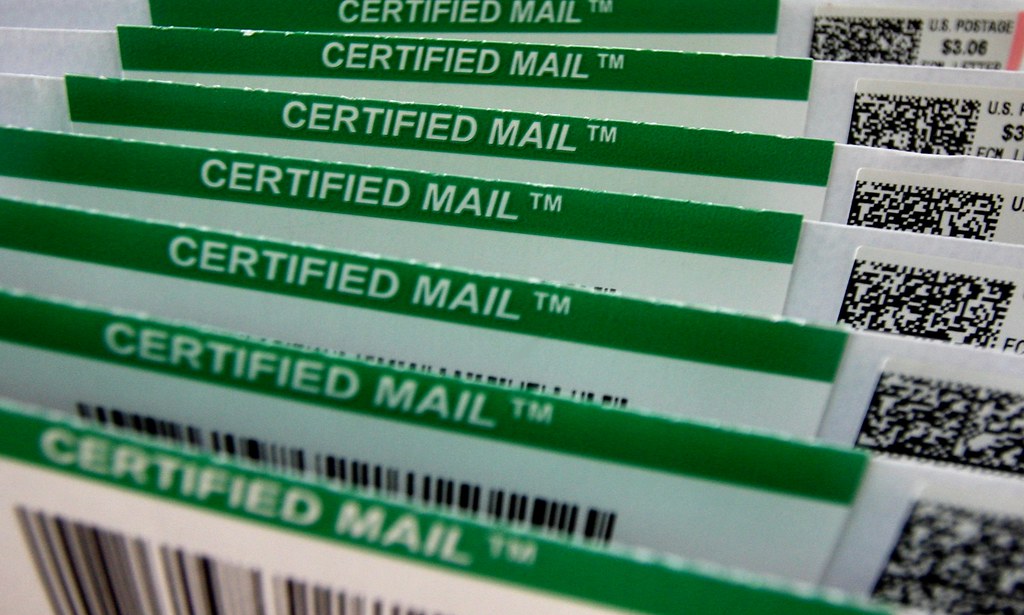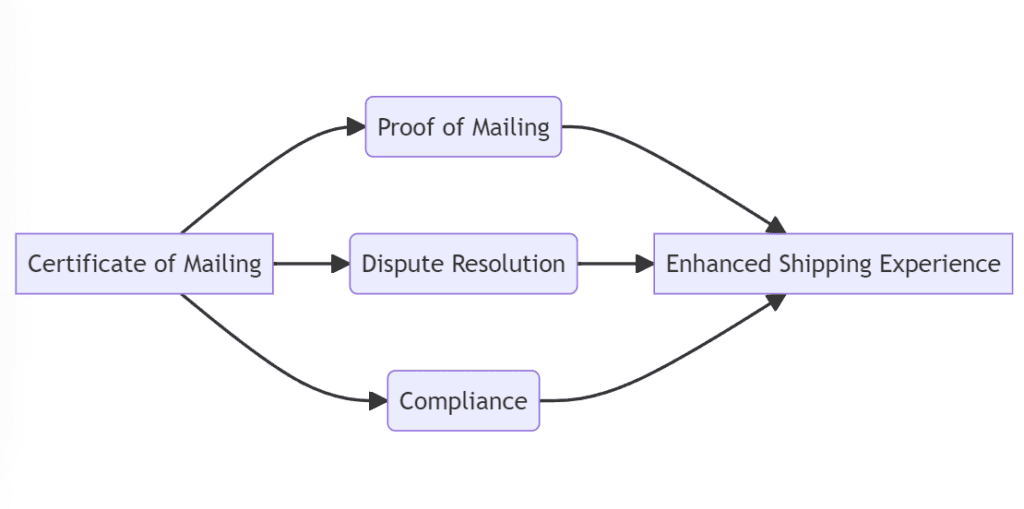
In the complex world of e-commerce and shipping logistics, a Certificate of Mailing serves as a critical document, validating the shipment’s dispatch. It offers an extra layer of security for businesses, ensuring accountability and traceability. This comprehensive guide explores what a Certificate of Mailing is, its key features, benefits, and how it can contribute to a streamlined shipping experience.
Certificate of Mailing: An Overview
A Proof of Mailing, a formal document from postal services, validates a package or letter’s mailing date. It serves as mailing proof, aiding businesses in shipment tracking and dispute protection.
Key Features of a Certificate of Mailing
A Certificate of Mailing typically includes essential details, such as the date of mailing, the sender’s information, the recipient’s address, and a unique identifier or number associated with the shipment. It may also detail the type of service used for the shipment, though it doesn’t include tracking information or confirmation of delivery.
Benefits of Using a Certificate of Mailing
Obtaining a Proof of Mailing can offer several advantages to businesses:

- Documentation: It provides documented evidence of the date of mailing, proving that the sender dispatched the item on a particular date.
- Dispute Resolution: Should disagreements or assertions about a package not being received occur, a Proof of Mailing can be used as evidence of the item’s dispatch.
- Compliance: For certain types of mail, such as legal documents or contracts, having a Proof of Mailing can fulfill compliance requirements, ensuring the sender has followed the necessary procedures.
How a Certificate of Mailing Enhances the Shipping Experience
A Proof of Mailing contributes significantly to a seamless shipping experience. It not only provides peace of mind for businesses but also enhances transparency in the shipping process.
For businesses dealing with high volumes of mail or shipments, or sending critical documents, obtaining a Certificate of Mailing can be part of a robust risk management strategy. It serves to reduce possible disputes over the shipment of an item, shielding businesses from unexpected liabilities.
Acquiring a Certificate of Mailing: The Process
Understanding the process of obtaining a Proof of Mailing is just as important as comprehending its benefits. This section outlines the typical steps, offering insights on integrating this tool into businesses’ shipping procedures.
Step 1: Prepare Your Shipment
First, prepare your package or letter for mailing as you normally would. This includes packing the item securely, addressing it correctly, and choosing the appropriate postal service for delivery.
Step 2: Request a Certificate of Mailing
When you go to your local post office or courier service to send your item, ask for a Proof of Mailing. Bear in mind, you must ask for this document during mailing; it’s not attainable retrospectively.
Step 3: Fill Out the Necessary Information
Fill out the Proof of Mailing form with the necessary details. This usually includes your information, the recipient’s information, the date of mailing, and the service used for the shipment.
Step 4: Pay the Fee
Obtaining a Certificate of Mailing usually involves a nominal associated cost. Once you pay this fee, the postal service will issue your certificate.
Step 5: Keep the Certificate Safe
Lastly, store the Proof of Mailing in a safe place. This document will be crucial should any disagreement arise regarding the package’s mailing status or date.
Implementing Certificates of Mailing in Business Operations
Now that we understand the process of obtaining a Certificate of Mailing let’s discuss its integration into everyday business operations. A Proof of Mailing should be a standard practice for businesses dealing with essential documents or high-value shipments.
By incorporating the use of Certificates of Mailing into their standard operating procedures, businesses can improve their risk management strategy. This pragmatic step can guard against potential disputes, promoting smoother, efficient operations.
Conclusion: The Value of a Certificate of Mailing
In summary, a Proof of Mailing is a vital tool in shipping and logistics. It offers businesses undeniable evidence of shipment, enhancing transparency, and mitigating risk. As e-commerce continues to surge, this document takes center stage, reinforcing business trust and streamlining the shipping process from dispatch to delivery.

By offering proof of mailing, aiding in dispute resolution, and ensuring compliance, it significantly impacts the overall shipping process.